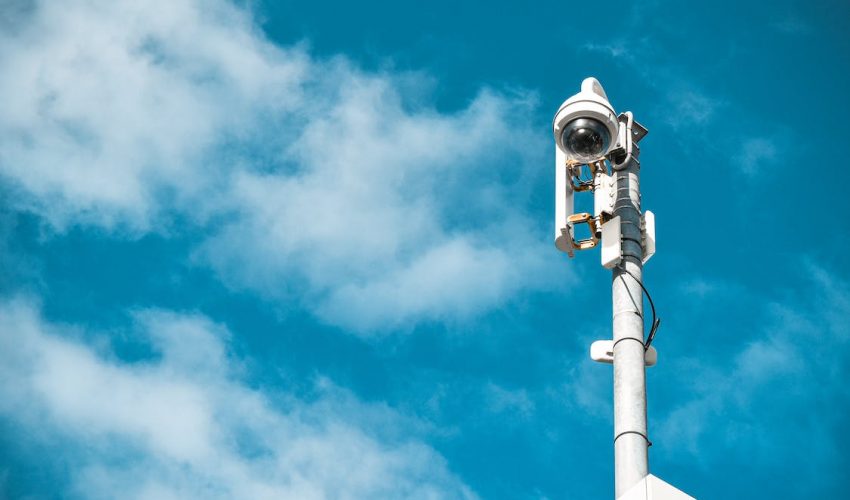The Closed-Circuit Television (CCTV) industry has seen a dramatic transformation over the past few years, driven by technological advancements and the increased need for security and surveillance in various sectors. From residential security to traffic management in smart cities, the applications of CCTV systems have broadened. The industry is evolving rapidly to meet the diverse needs and challenges, leading to several emerging trends.
1. Artificial Intelligence and Machine Learning One of the most significant advancements in the CCTV industry is the incorporation of Artificial Intelligence (AI) and Machine Learning (ML) into surveillance systems. These technologies bring a new level of intelligence to CCTV Installation systems, allowing them to automatically analyze footage and recognize suspicious activities or patterns. They can help identify loitering, unattended objects, and intrusion in restricted areas. Furthermore, AI-enabled CCTV systems can perform facial recognition, making them invaluable in various sectors, from retail to law enforcement.
2. Cloud-Based Storage With the progression in cloud technology, CCTV systems are shifting from traditional local storage to cloud-based storage solutions. Storing footage on the cloud offers numerous benefits such as accessibility, scalability, and cost-efficiency. Users can access footage from anywhere, at any time, using a secured login. As businesses expand, cloud storage can easily scale to accommodate more data, eliminating the need for expensive hardware upgrades. Also, cloud storage provides an added layer of security, protecting data from physical damage or theft.
3. Wireless Technology The growing preference for wireless CCTV systems is driven by their ease of installation and adaptability. Unlike wired systems, wireless CCTV systems do not require complex cabling, making them suitable for historical buildings, rented properties, and temporary installations. Additionally, wireless systems can be effortlessly integrated with other security devices, forming a comprehensive security network that can be remotely monitored and controlled.
4. Integration with IoT As the Internet of Things (IoT) continues to expand, CCTV systems are becoming a critical component of this interconnected environment. IoT allows CCTV systems to communicate with other connected devices, enabling automated responses to detected events. For instance, a CCTV system can trigger alarms, send alerts, or lock doors upon detecting suspicious activities. This integration not only enhances security but also helps build a more efficient and convenient living and working environment.
5. Video Analytics Video analytics is another trend that has significantly enhanced the functionality of CCTV systems. This technology uses algorithms to analyze video footage and extract useful insights. It can monitor crowd movement, traffic flow, and customer behavior in retail stores, aiding business decision-making and urban planning. In security applications, video analytics can provide real-time alerts for intrusion detection, line crossing, and motion detection, enhancing the preventive capabilities of surveillance systems.
6. Cybersecurity Focus As CCTV systems become more connected, they also become more vulnerable to cyber threats. Hence, cybersecurity has become a focal point in the CCTV industry. Manufacturers are now prioritizing the development of systems that are resilient to hacking, data breaches, and other forms of cyber-attacks. This includes implementing strong data encryption, frequent software updates, and secure user authentication protocols.
7. 4K and HD Video The demand for clearer, more detailed surveillance footage is driving the transition from standard-definition to high-definition and 4K video in CCTV systems. Higher resolution cameras provide finer details and wider coverage, improving the surveillance system’s efficacy. They can capture clear images of faces, vehicle license plates, and distant objects, providing crucial evidence in crime investigations and legal proceedings.
8. Thermal Imaging The adoption of thermal imaging technology in CCTV cameras is becoming more widespread. Unlike conventional cameras, thermal cameras detect heat rather than light, enabling them to capture images in complete darkness, heavy smoke, or fog. This makes them particularly suitable for high-security areas, perimeter surveillance, and industries like mining and oil & gas where visibility conditions can be challenging.
9. Mobile Surveillance With the rise of smartphones, mobile surveillance has emerged as a hot trend in the CCTV industry. Most CCTV systems now come with mobile apps that allow users to remotely monitor their property in real-time. Users can view live feeds, play recorded footage, and receive alerts on their smartphones, providing a sense of security and control.
10. Smart Cities Integration As the concept of smart cities becomes a reality, CCTV systems are playing a central role in this transformation. They are being used for traffic management, public safety, crowd control, and city planning. Real-time surveillance data from CCTV cameras is used to control traffic lights, identify congested areas, monitor public spaces, and detect anomalies, contributing to safer and more efficient cities.
Conclusion These trends signify the rapid evolution of the CCTV industry, driven by the ongoing technological advancements and the ever-increasing need for effective surveillance systems. As the industry continues to innovate, the potential of CCTV systems in enhancing security, improving business operations, and contributing to smart city development will only increase.
The future of the CCTV industry is likely to witness more AI-driven analytics, more robust cybersecurity measures, more integrated systems, and higher resolution cameras, all of which will drive the industry towards more effective and efficient surveillance solutions.



